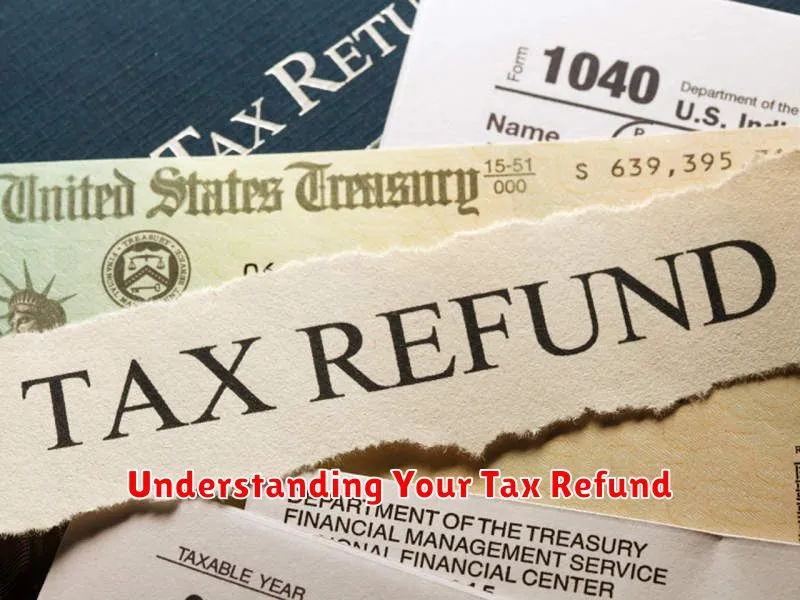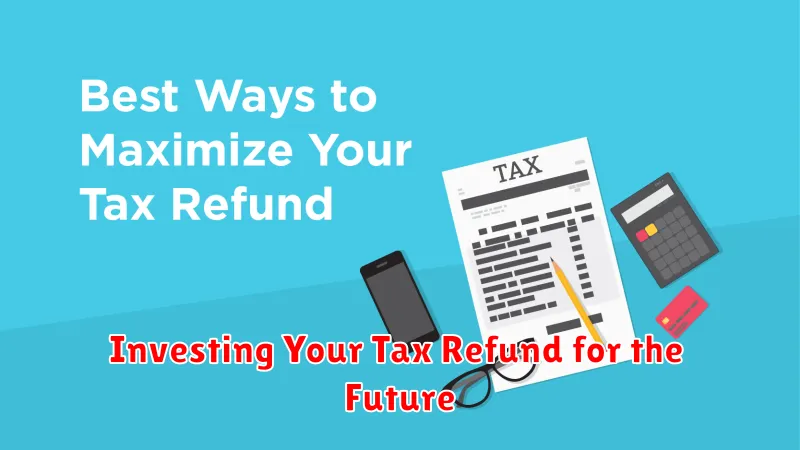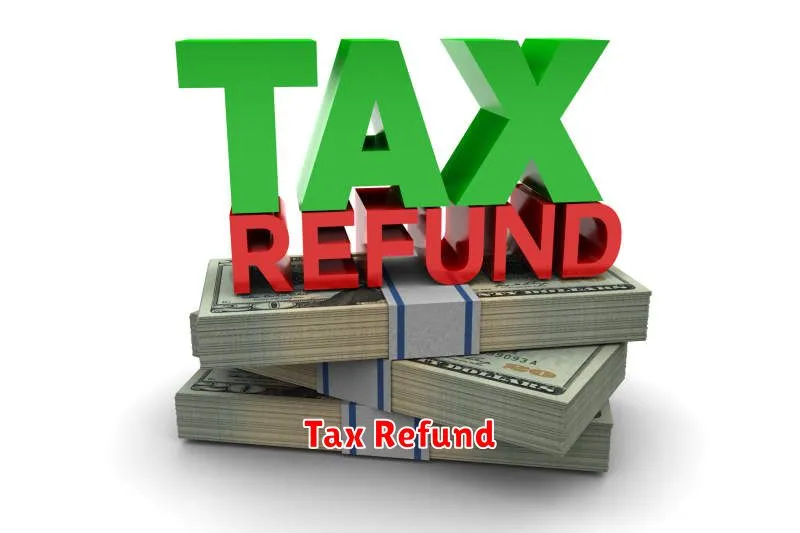It’s tax season again, and while the process can feel like a chore, the light at the end of the tunnel is the potential for a tax refund. Whether you’re getting a little back or a significant sum, it’s important to view this as an opportunity to make smart financial moves. This isn’t just “found money” – it’s your hard-earned income, and putting it to work for you can make a real difference in your financial well-being.
This article will guide you through the best ways to maximize your tax refund and turn it into a stepping stone for your financial goals. From tackling debt to investing in your future, we’ll explore practical strategies that can help you make the most of this yearly opportunity. Get ready to ditch the impulse splurges and embrace a smarter approach to your refund!
Understanding Your Tax Refund

A tax refund isn’t “free money” – it represents an overpayment of taxes throughout the year. Essentially, you’ve given the government an interest-free loan. When you file your taxes, you’re reclaiming that overpayment.
Several factors influence the size of your refund, including your income, filing status, withholdings, and any deductions or credits you’re eligible for. Understanding these factors can help you optimize your tax strategy for the future, potentially reducing your tax liability and increasing your take-home pay throughout the year.
Smart Ways to Use Your Tax Refund
A tax refund can feel like a windfall, but instead of splurging, consider these smart strategies to maximize its impact:
1. Bolster Your Emergency Fund: A robust emergency fund is crucial. Aim for 3-6 months’ worth of living expenses. A tax refund can help you reach this goal faster, providing a financial safety net.
2. Tackle Debt: Paying down high-interest debt, like credit cards, can save you significant money in the long run. Use your refund to make a lump sum payment and reduce your debt burden.
3. Invest in Your Future: Consider using your refund to invest in your future. This could mean contributing to a retirement account like a 401(k) or IRA, or investing in your education or skills development.
4. Home Sweet Home: If you’re a homeowner or aspiring homeowner, your refund can be directed towards home-related expenses. Use it for a down payment, renovations, or to pay down your mortgage.
5. Needed Big Purchases: If you’ve been putting off a necessary but expensive purchase, like a new car or appliance, your refund can help you make that purchase without going into debt.
Remember, the smartest way to use your tax refund depends on your individual financial situation and goals. Evaluate your priorities and make a plan that aligns with your long-term financial well-being.
Paying Off Debt with Your Tax Refund
Receiving a tax refund can feel like finding extra cash. Instead of splurging, consider using this windfall to tackle debt. This strategy can save you money in the long run and improve your financial well-being.
Start by prioritizing your debts. High-interest debts, like credit cards, should be at the top of your list. Focus on paying down the principal as quickly as possible to minimize interest charges. Even a small dent in a high-interest debt can make a difference.
Don’t overlook lower-interest loans like student loans or mortgages. While the interest might not be as significant, making an extra payment can shorten your repayment term and save you money over time.
Communicate with your lenders. Inform them about your intention to make a lump sum payment from your tax refund. Some lenders might have specific instructions or offer a slight discount for early repayment.
Remember, using your tax refund to pay down debt is an investment in your financial future. It reduces stress, frees up more income in the long run, and helps you build a stronger financial foundation.
Investing Your Tax Refund for the Future

A tax refund can feel like a bonus, but instead of a splurge, consider using it to build a stronger financial future. Investing your refund, even a small amount, can make a big difference over time thanks to the power of compound growth.
Start with your goals. Are you saving for retirement, a down payment on a house, or your child’s education? Identifying your goals will help determine the best investment vehicles. For long-term goals like retirement, a tax-advantaged account like a Roth IRA or traditional IRA can provide significant growth potential.
Consider your risk tolerance. Investing always involves some level of risk. If you’re risk-averse, low-cost index funds or ETFs tracking the broader market can offer steady growth. For those comfortable with higher risk, individual stocks or sector-specific funds might be attractive.
Don’t forget about diversification. Spreading your investments across different asset classes (stocks, bonds, real estate) and industries can mitigate risk and potentially enhance returns.
Remember, even a small amount invested wisely can grow significantly over time. Consult with a financial advisor to determine the best investment strategy for your individual circumstances and goals.
Building or Boosting Your Emergency Fund
Receiving a tax refund can feel like finding free money. However, before you splurge on a vacation or new gadgets, consider putting a portion, or even all of it, towards a more strategic goal: building or boosting your emergency fund.
An emergency fund is a safety net of readily available cash designed to cover unexpected expenses like medical bills, car repairs, or job loss. Ideally, it should hold three to six months’ worth of living expenses. If you don’t have an emergency fund, now’s the perfect time to start building one. If you already have one, your tax refund can provide a significant boost, bringing you closer to your savings target and strengthening your financial security.
How to Avoid Splurging Your Tax Refund
Getting a tax refund can feel like winning a financial lottery, but it’s important to resist the urge to splurge. Here’s how to avoid blowing through your refund and make your money work for you:
1. Set Financial Goals: Before the refund hits your account, determine your short-term and long-term financial goals. Do you need to pay down debt? Build an emergency fund? Invest for retirement? Having a clear purpose for the money can help you avoid impulse purchases.
2. Create a Budget: Allocate your refund strategically within your budget. Treat it as a bonus to fuel your financial goals, not as free money to spend carelessly.
3. Avoid Lifestyle Inflation: Receiving a lump sum might tempt you to upgrade your lifestyle. Resist the urge! Focus on your needs over wants, and remember that a temporary spending spree won’t bring long-term financial security.
4. Delay Gratification: If you’re eyeing a significant purchase, give yourself a cooling-off period before spending your refund. This will help you determine if it’s a genuine need or just an impulse buy.
5. Seek Professional Advice: If you’re unsure about the best way to manage your refund, consider consulting a financial advisor. They can provide personalized guidance based on your individual circumstances.
Common Mistakes People Make with Their Tax Refunds
While a tax refund feels like a financial windfall, it’s important to remember it’s simply money you’ve overpaid throughout the year. Here are some common mistakes to avoid:
1. Spending it all at once. It’s tempting to splurge, but consider your financial goals. Could your refund help pay down debt, bolster savings, or fund an investment?
2. Ignoring needed expenses. If you have outstanding high-interest debt or essential home or car repairs, using your refund to address these can save you money in the long run.
3. Not adjusting your withholding. A large refund might mean you’re having too much tax withheld from your paycheck. Adjusting your W-4 can give you more take-home pay throughout the year.
By being mindful of these common mistakes, you can make the most of your tax refund and ensure it contributes to your overall financial well-being.

